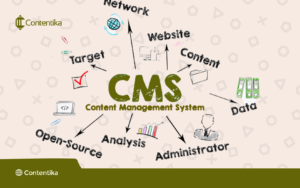
Dominate Your Industry With Proven Content Promotion Strategies
Content creation is not just all there is to succeed with content marketing; content promotion is equally as important. To skyrocket the visibility of your business, you necessarily must utilize the best ways to promote your content and make it stand out from competitors. In fact, a good content promotion strategy can mean the difference between your content getting lost in the noise or reaching new heights and driving serious results for your business. Research has shown that businesses that engage in content promotion strategies achieve 3.5x more traffic than those that don’t. This post provides everything about content promotion, including why it’s important, how to create a solid strategy, which channels and tactics to use, and expert tips from industry leaders. What is Content Promotion? Content promotion is the distribution of content to the right audiences to drive relevant traffic, leads, and sales for your business. Content promotions put your content in front of the right people (using the right tools and channels) who are likely to engage with it and drive business goals. Moreover, content promotion is essential for increasing brand visibility, improving your website’s search engine rankings, and eventually driving conversions. Many marketers are leveraging content promotion in a manner that is unprecedented because it has the power to amplify your message, build relationships and extend your reach. In a survey by Hubspot, the majority of marketers (82%) are massively investing in content marketing, 10% don’t use it at all, and the remaining 8% aren’t sure if their company does or not. This goes to show that content promotion is an important part of any digital marketing strategy. Ultimately, content promotion is an integral part of a successful marketing strategy and can be a game-changer for your business. Why You Should Strategically Promote Your Content Content promotion is an integral part of any successful digital marketing strategy. Understanding how this is important and why it is necessary can help businesses gain significant traction and reach a larger audience. Here are some of the reasons why content promotion should be seen as a priority for businesses: 1. Direct Connect With Target Audience With content promotion, you can create a deeper engagement with your audience. In fact, sharing your content through targeted promotion efforts will enable you to connect with specific segments of your audience and tailor your messages to their interests and needs. A study by the Content Marketing Institute found that having a target audience would have a positive impact on content success. To illustrate, if your content is strictly for businesses or professionals (B2B Marketing), LinkedIn will be the platform you should use to reach your target audience and promote your content. What this does is ensure that your content promotion strategy and investment are focused on the right channels, thus resulting in a higher ROI. 2. Builds Trust and Credibility Another incentive for content promotion is that it helps develop credibility and trust for the business brand. A study conducted by Salsify showed that more people are likelier to do business with a business they trust and feel like they can rely on. When the content you promote is of high quality and valuable, people will be more likely to trust you. This way, you can establish your presence and develop a loyal customer base. 3. Drives Traffic and Engagement This is, perhaps, the most obvious benefit of content promotion. Engagement and traffic come from promoting your content on the right channels and getting it in front of the right audience. Studies have shown that the key to success in content promotion is to create content that resonates with your audience. When your content is promoted through the right channels, with the right message and targeting, it can drive significant amounts of traffic to your website. This allows you to reach a larger audience and get more leads, sales, and conversions. 4. Improved Search Engine Rankings and Organic Reach Every business owner desires to rank all content higher in search engines like Google. Why? Because that’s how they get organic traffic – which means getting traffic without having to pay for it. And one of the benefits of content promotion is that it helps with that. The more people that see and engage with your content, the higher the chances it will rank high. A study found that the majority of website traffic- around 53% – comes from organic search results. With all certainty, organic traffic is some of the best traffic you can get because it’s highly targeted and usually converts very well. 5. Generates Leads and Sales At the end of the day, all businesses want to generate leads and sales. And content promotion can play a major role in that. By promoting your content, you’re exposing it to a larger audience. And the more people see and interact with the content the higher the likelihood of generating leads and sales. If your ultimate goal is to increase leads and sales, then you need to focus on creating valuable content and position yourself as an expert in your industry. When people see that you’re doing this, they’ll be more likely to trust your brand and do business with it. According to recent studies by Content Marketing Institute, content marketing costs 62% less than traditional marketing and generates 3 times as many leads. This means a higher ROI for your business. Platforms That Can Scale Your Content Promotion Efforts Where you eventually choose to promote your content will depend on the type of content, your target audience, and your overall goals. Here are key platforms and strategies that tend to work well for many businesses in content promotion. 1. Social Media Social media platforms like Facebook, Twitter, Instagram, LinkedIn, etc., are great places to start promoting your content. Not only are they free to use, but they also have millions of users. According to recent studies by Statista, there are over 4.59 billion active social media users worldwide. That means there’s a good










